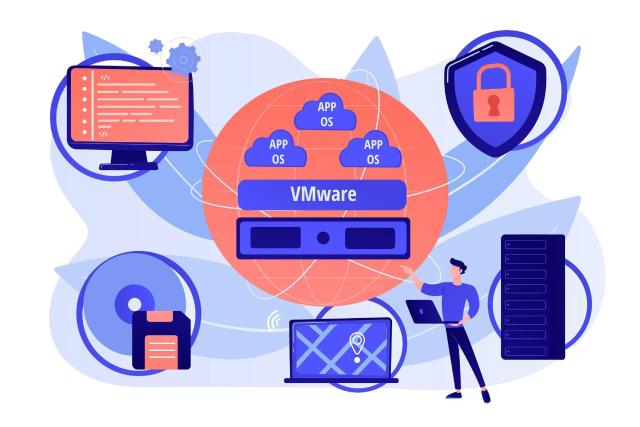5 Key Differences Between Proxies and Firewalls
The world has never been this hyper-connected, but here's the bad side: if you are not dealing with one security threat, it's another, from malware and hacking to even lapses by your team. To enhance the protection of sensitive data, you might need more than one tool.
Two of the most thrown-around words in this space are firewalls and proxies. To non-tech-savvy eyes, they mean the same thing. But the truth is that they are not!
Although proxies and firewalls can overlap, they serve different roles in network security. If you don't know the difference, you can easily rely on one for tasks the other is meant to handle. Using them incorrectly creates vulnerabilities in your network; as such, anyone managing a network or trying to revamp cybersecurity should know their roles and use them properly to protect data and systems.
Here, we'll take you through the five main differences between proxies and firewalls. This will help you use either or combine them for a stronger cybersecurity posture:
1. Primary Purpose
At their core, proxies and firewalls are designed to enhance network security. However, they do that differently.
Proxies step in to provide a link between a user and the Internet. When you send a request, the proxy takes it and relays it to the servers. By doing that, it masks your IP address, allowing you to browse anonymously and bypass region-specific restrictions.
So, choosing reliable proxies like NetNut means protecting online privacy and bypassing website limitations.
On the other hand, a firewall is focused on defending the network from security threats. It can either work at the device level (host-based firewall) or the network level (software firewalls).
Device-level firewalls are installed directly into the device to filter traffic and protect it from unauthorized access. They differ from network firewalls, which work as a network perimeter by monitoring and filtering traffic passing through the networks.
2. How They Work
Proxies mainly control traffic by acting as an intermediary that forwards your request to a server and then sends the response. They are effective in managing what users can access online. By hiding the user's original IP and using their own, they allow you to browse from other regions.
In contrast, firewalls filter traffic directly according to security criteria. So, unlike proxies, they don't hide the users' identities. Instead, they inspect data packets to spot potential threats and implement pre-set rules that block unsafe or unauthorized traffic.
Firewalls enforce security on a much deeper level by blocking certain types of traffic ports or IP addresses in response to perceived threats. Companies can use firewalls to restrict their networks from accessing certain sites.
3. Placement
Because of their purpose, proxies take a strategic position between the browsing device and the Internet. Local proxies are located on the client's side, like in corporate, where they control employees' internet access. Remote proxies are managed by the provider, so they are on the server's side.
Firewalls are positioned differently. They are at the network's endpoints, such as gateways and routers, providing the first defense line for an internal network. They monitor traffic entering and exiting the network, applying security policies to control who accesses the networks.
4. Security Focus
Proxies and firewalls provide added security layers to the network, but the point of focus is where the difference comes in.
Proxies put privacy first and controlling access to online content second. They are ideal for situations where anonymity is important. This is because it can mask a user's IP address and prevent websites from tracking them.
For robust security, you need firewalls. Proxies aren't built to defend against more intricate cyber threatslike malware or network invasions. As such, they don't go deep with data scrutiny to identify any potential security threats, nor do they watch for signals of malicious activity. This is where firewalls come in.
Firewalls are built with strong security features that allow them to protect the internal network from malicious traffic and block unauthorized access. They can also identify and stop DDoS (Distributed Denial of Service) attacks, viruses, and even more sophisticated assaults like ransomware. Next-generation firewalls (NGFWs) have more features, such as threat intelligence capabilities, that allow them to evolve as the threats evolve, making it that bit more protected.
5. Application
There are various types of proxies to suit different uses; SOCKS, HTTPS, forward, reverse, etc. If you’re running a business or managing a network, you probably need the right proxies to keep employees from wasting time on nonwork-related sites like social media platforms and to speed up internet access.
Proxies are pretty handy because they don’t just block distractions—they also secure your connections, keeping your network safe from any potential threats. Plus, they’re great for bypassing geo-restrictions, giving you access to content that might be blocked in your region.
Now, when it comes to keeping your network truly secure, that’s where firewalls come in. They help protect sensitive data and make sure your business meets all the regulatory security requirements. Its features like intrusion prevention as well as real-time threat detection capabilities mean firewalls can provide you the solid barrier you need against cyberattacks.
Conclusion
Choosing the right tools for your network is critical; you need to understand what makes proxies and firewalls different in order to make an informed choice.
Every tool has its purpose, so it’s important to know what you need before picking one. If you want to manage access to the internet or beef up the security, mix them up. This is smart because you get added protection and performance, so everything works perfectly.

